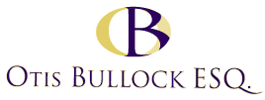The following is an interview conducted by Peter Kramer, Senior Associate, Nonprofit Finance Fund, with Otis Bullock, Executive Director, Diversified Community Services. This is a cross-post from the Nonprofit Finance Fund blog. To read the original post, go here.
 Illuminating Financial Dynamics for Improved Nonprofit Management: An Executive Director’s Experience
Illuminating Financial Dynamics for Improved Nonprofit Management: An Executive Director’s Experience
Otis Bullock tells me that it can be a challenge “to pair a great business model with great programming”. As the executive director of Diversified Community Services (“Diversified”), an organization that serves children and families in the Point Breeze neighborhood of Philadelphia, he knows firsthand the challenges of balancing the abundant needs of his community and constituents against the constraints of limited or uncertain public and private funding.
It’s a balancing act that requires the relentless stewardship of financial assets and continual monitoring of financial and program data. Otis knows well that sound financial management is grounded in access to reliable and timely information about his organization’s annual performance, revenue and expense dynamics, balance sheet health and liquidity. He has found Financial SCAN, a comprehensive new standard for financial health analysis, to be a helpful tool in his financial management toolbox.
Here, Otis shares his experience using financial data and analysis to guide his organization forward in challenging times.
PK: How does Diversified achieve its mission?
OB: Rooted in South Philadelphia and embracing the philosophy of the settlement house movement, our mission is to enable children, youth and families to realize their fullest potential and achieve self-sufficiency in safe neighborhoods. We’re recognized as the “go-to” organization in South Philadelphia because we bring people together regardless of religion, race, or ethnicity in a spirit of friendship to make our neighborhood a better place to live.
We believe in and act for economic and social justice so that people have the opportunities to advance economically, socially, educationally, and personally. Our community-building efforts promote physical, economic, and social development – improved housing and safety, as well as increased financial resources for individuals and the community as a whole.
PK: As the new executive director of Diversified, what are the biggest obstacles your organization faces in effectively connecting money and mission?
OB: Our biggest obstacle in effectively connecting money and mission is a past inability to pair a great business model with great programming. Diversified is very well known for its work in the Point Breeze community, especially our work in early childhood education and youth development. However, we have not yet figured out a way to make it profitable; mostly because the word “profits” was never in our vocabulary. As a result, great programs with tremendous impact on the community could become significant drains on the budget.
PK: That’s certainly a reality that most nonprofit leaders face. What financial planning and management strategies have you employed to overcome these obstacles?
OB: One of the things that we have done, with the help of NFF, is look at our budget more strategically. We’ve become more proactive about our financial and programmatic priorities. We started breaking our budget down by programs, instead of solely analyzing overall revenue vs. expenses. This allowed us to see the profitability of each program that we provide. If programs are losing money, we are forced to make tough strategic decisions as to whether we should keep them and whether they are core to our mission. Breaking the budget down this way forces us to make tough (but important) decisions to keep the budget in balance with our mission.
PK: You’ve recently used our Financial SCAN tool. How have you incorporated it into Diversified’s financial analyses and management?
OB: I used Financial SCAN to create a snapshot of Diversified’s fiscal health before I took my current position as executive director. I then used it to easily explain our fiscal health to the board. It can help an organization to think strategically about its finances, as well as programs. I’m able to compare my organization’s fiscal health to that of peer organizations. I’m able to use Financial SCAN to easily explain to my board and financial staff why profitability is important – even for “nonprofits”. My organization never thought about strategically and proactively planning its financial future until I presented them with Financial SCAN.
PK: You mentioned the peer analysis function of Financial SCAN. What have you learned about your financial condition relative to your peers’?
OB: Compared to my peers, I’ve found that my organization is in good shape. However, our position is very volatile. The report helps illustrate that 85% of our revenue comes from government sources, which leaves us in a very vulnerable position considering the constant threat of government budget cuts. Liquidity in our organization is pretty good. But in looking at our SCAN, I see that our organization does not have the means to weather another government budget-cutting season. For that reason, we’re becoming much more proactive.
PK: What can you tell us about your future plans? What’s next for Diversified?
OB: We have begun a complete assessment of our entire organization. As a part of our internal strategic planning process, our future fiscal health is front and center in those discussions. That hasn’t happened in the past. For many organizations, conversations about desired impact happen with little regard for past financial history and the budget. Financial SCAN has helped my board assess the business and financial implications of our future plans.





